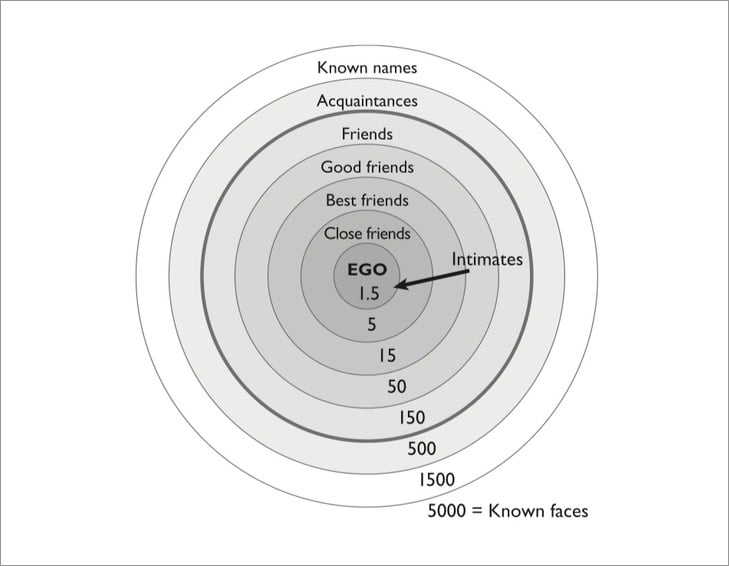The Circles of Friendship
This chart caught my eye yesterday:

It’s from Robin Dunbar’s recent book, Friends: Understanding the Power of Our Most Important Relationships. You might recall the author’s name from his concept of Dunbar’s number:1 that on average people can maintain about 150 friendships with others, a limit that is determined by human brain size and function. The chart is a more detailed version of the concept: it shows, roughly, the number of people we can have meaningful relationships with at various levels of intimacy. Dunbar explains in this Atlantic interview:
The innermost layer of 1.5 is [the most intimate]; clearly that has to do with your romantic relationships. The next layer of five is your shoulders-to-cry-on friendships. They are the ones who will drop everything to support us when our world falls apart. The 15 layer includes the previous five, and your core social partners. They are our main social companions, so they provide the context for having fun times. They also provide the main circle for exchange of child care. We trust them enough to leave our children with them. The next layer up, at 50, is your big-weekend-barbecue people. And the 150 layer is your weddings and funerals group who would come to your once-in-a-lifetime event.
The layers come about primarily because the time we have for social interaction is not infinite. You have to decide how to invest that time, bearing in mind that the strength of relationships is directly correlated with how much time and effort we give them.
The interview is interesting throughout — there’s evidence that introverts have fewer connections in each layer than extroverts, your numbers go down as you get older when relationship become harder to replace, “falling in love will cost you two friendships”, and how much time is necessary to form a friendship:
It takes about 200 hours of investment in the space of a few months to move a stranger into being a good friend. This fits with our data, which suggests that close friends are very expensive in terms of time investment to maintain. I think the figures are a guideline rather than precise. It just means friendships require work.
I’ve been thinking a lot about friendship over the many months of the pandemic — about how my friend circles changed during that time and what friendship actually means to me. It is not much of an exaggeration to say that my close friends saved my life during the past year — there were 3 or 4 people that I leaned heavily on (and they on me) for advice, sanity checks, shoulder-crying, going on long walks, emotional support, grieving, getting unfunked, relationship advice, and generally feeling like a normal & whole person in the midst of an unprecedentedly awful situation. We talked and cried and raged about anything and everything. We went deep and got intimate. If there’s a silver lining to the pandemic for me, it’s the development and deepening of these incredible friendships. ♥
Fun note on this… When I searched to find the Wikipedia page for Dunbar’s number, Google helpfully(?) gave me the phone number for a local physical therapist named Dunbar.↩





Stay Connected